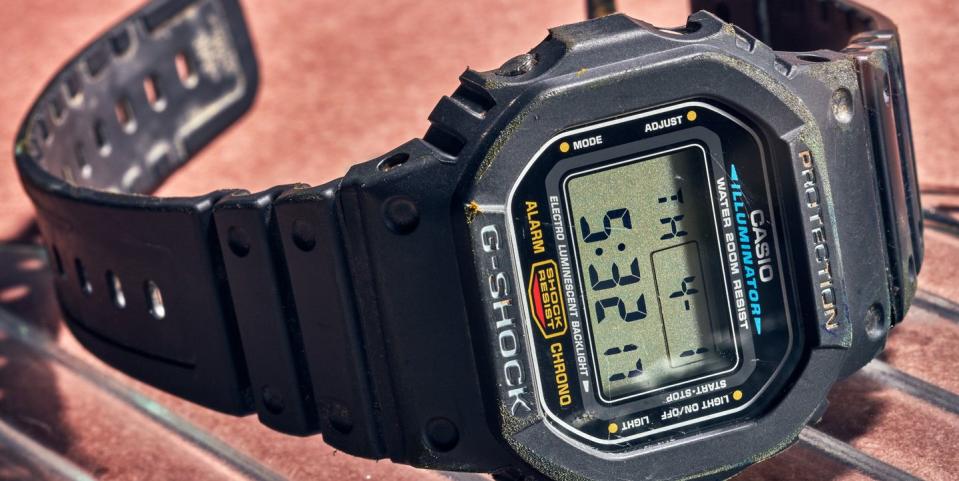How the Casio G-Shock Became a Style Icon

How many designers have thrown their masterpiece out a third-story window? To test his ultimate go-anywhere watch, Casio engineer Kikuo Ibe did just that. Ibe demanded that it withstand a trio of rigors: go 10 years on a single battery, withstand 10 atmospheres of water pressure, and survive a 10-meter fall. His concept survived these trials, and the G-Shock was born.
This story originally appeared in Volume 5 of Road & Track.
That was 1981. In the decades since, the humble G became iconic, then highly collectible and even fashionable: Kanye, Rihanna, Pharrell, and countless other A-list mononyms have sported a G. But the watch never strayed far from its mission, providing supreme function and durability above all. To illustrate, we present this battle-scarred DW5600, available unblemished behind any Walmart jewelry counter for $40. This modern interpretation stays close to the iconic original’s form. Its rubberized case insulates the quartz movement from shock and acts as an exoskeleton to disperse forces that would obliterate a mortal timepiece. Casio once drove a 50,000-pound truck over a watch just like this for publicity. The G kept on (metaphorically) ticking, and captured a Guinness World Record.
Paired with its near-indestructibility, the humble G offers a genuinely useful spread of tools: time and date, alarm, countdown timer, and stopwatch. Casio will sell you a far fiddlier G-Shock variant that tracks everything from the tide to the phase of the moon, but even in its basic form, the watch is flight-qualified by NASA, ubiquitous on the wrists of soldiers, trusted by adventurers, and strapped on by anyone who might point four wheels at the unknown.
SIGN UP FOR THE TRACK CLUB BY R&T FOR MORE EXCLUSIVE STORIES
You Might Also Like

 Yahoo Autos
Yahoo Autos 